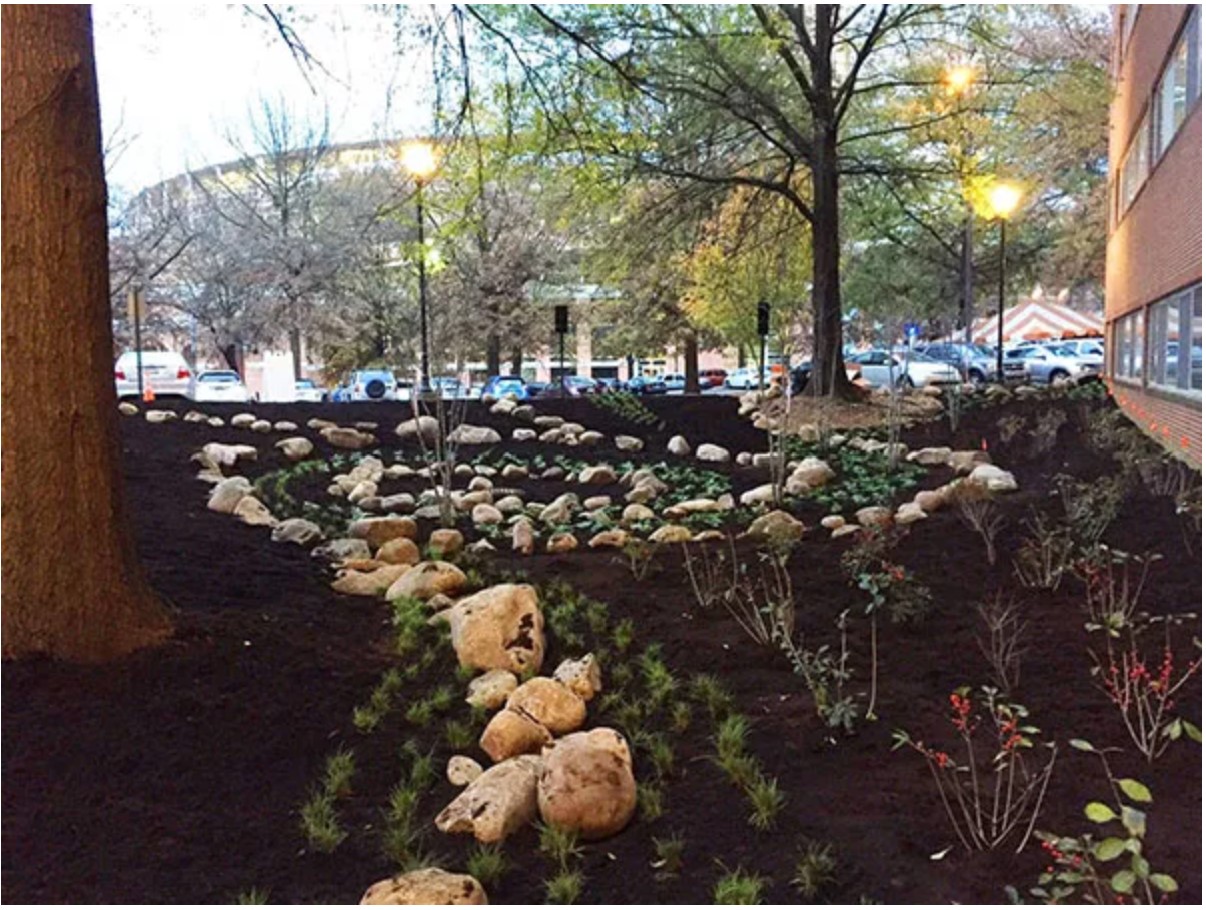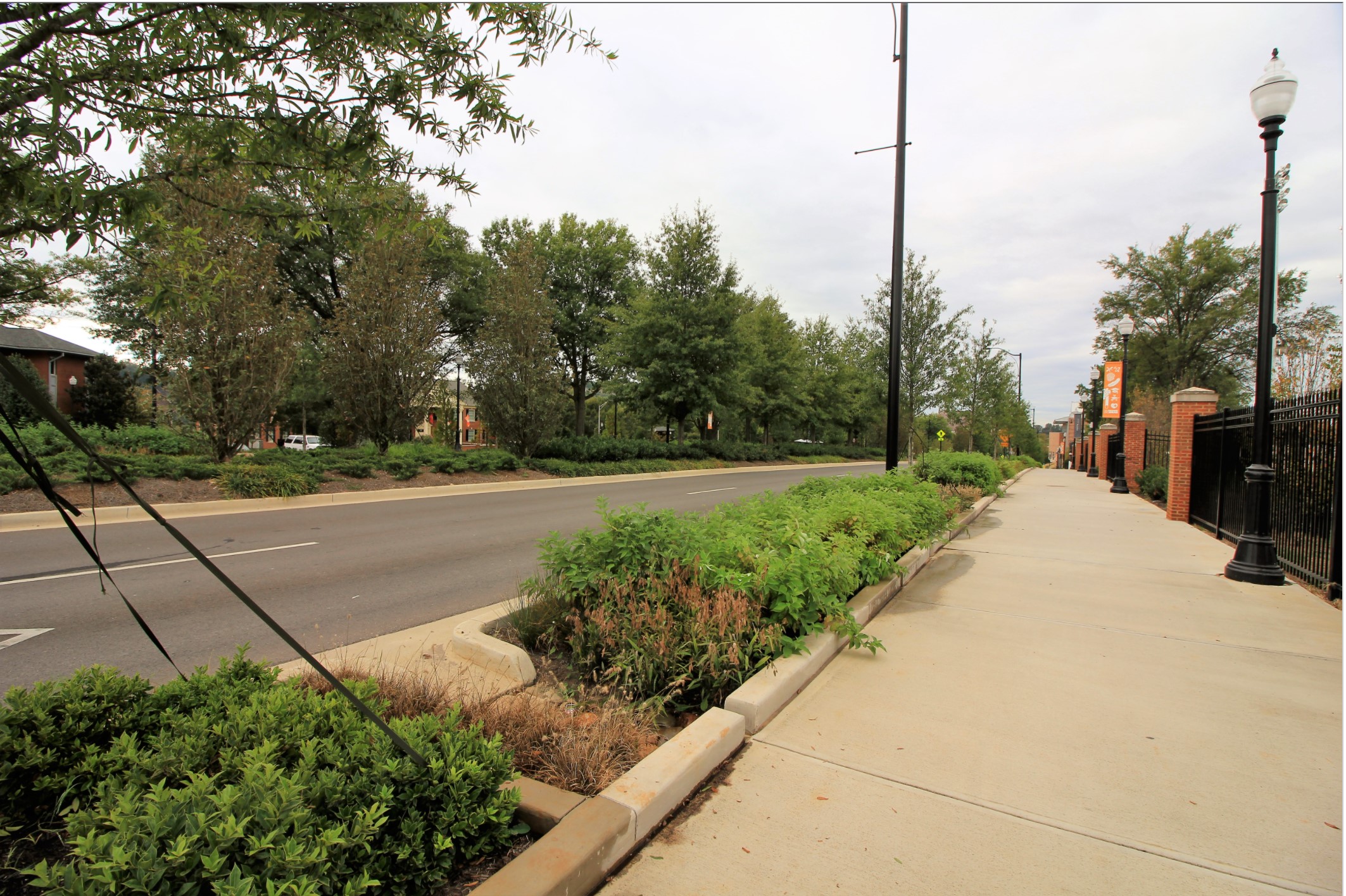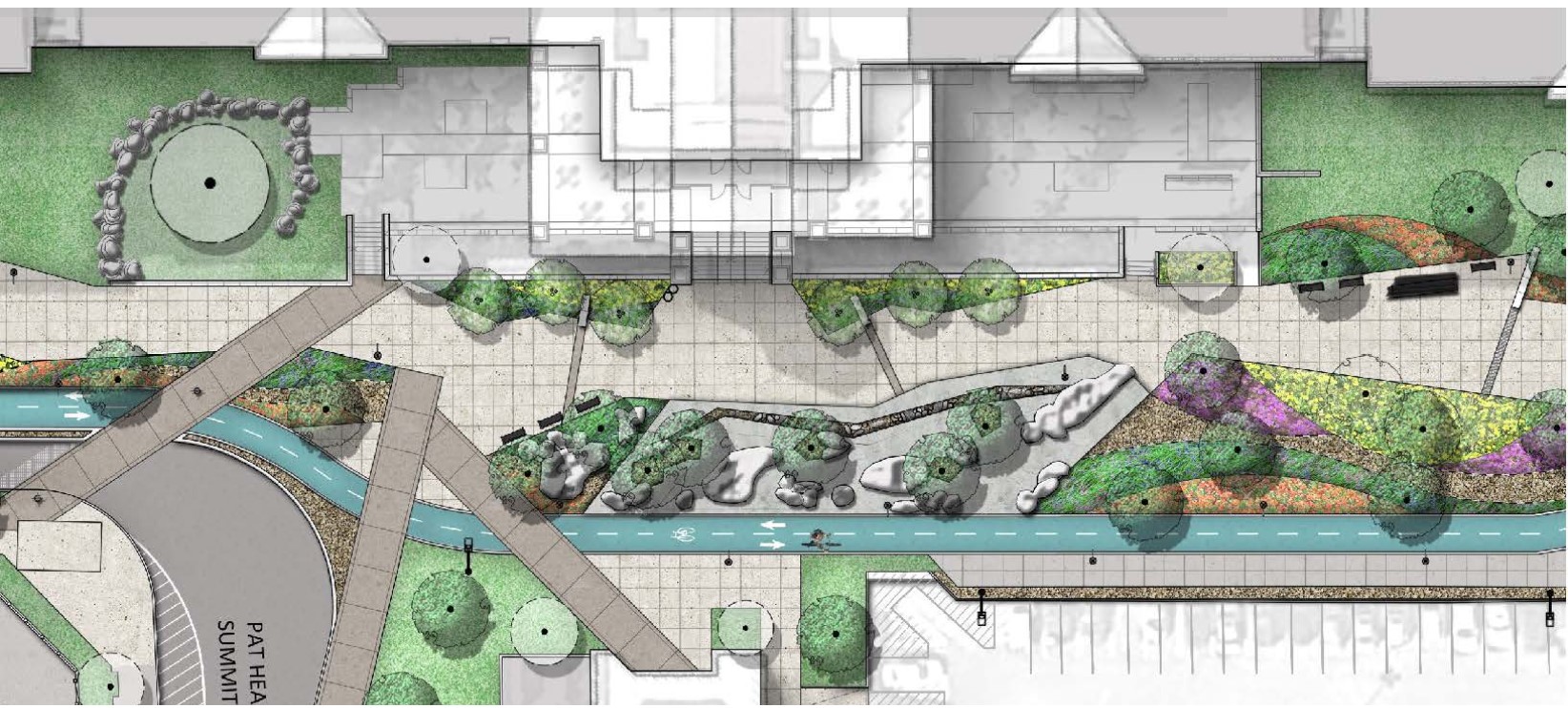Green infrastructure is a new approach to combat traditional building designs. Though mostly focused on stormwater management, green infrastructure provides numerous benefits to communities and mitigates problems commonly found in urbanized areas.
Impacts of Urban Areas
- Urban Heat Island
- Increased impervious surfaces
- Increased runoff
- Degradation of waterways
- Destruction/alteration of habitat
- Disruption of natural migratory patterns
- Food deserts
- Minimal access to green spaces
Benefits of Green Infrastructure
- Improvement of water and air quality
- Reduce flood risk
- Climate resiliency
- Habitat and wildlife creation and conservation
- Recreational benefits to communities
- Improved mental well-being
Green Infrastructure Highlights
Where To Find Stormwater Features on Campus
Chances are that when you’re walking around campus, you’ve encountered a few types of green infrastructure. Among the most common are permeable pavers that run across Pedestrian and a string of bioswales that run throughout Volunteer Blvd. However, other systems tend to go unnoticed. Silva cells, rain gardens, and cisterns also populate parts of the University of Tennessee’s campus in an effort to reduce the environmental impact the university has on surrounding areas.
Learn more about where green infrastructure systems are located at UTK using our interactive map.




